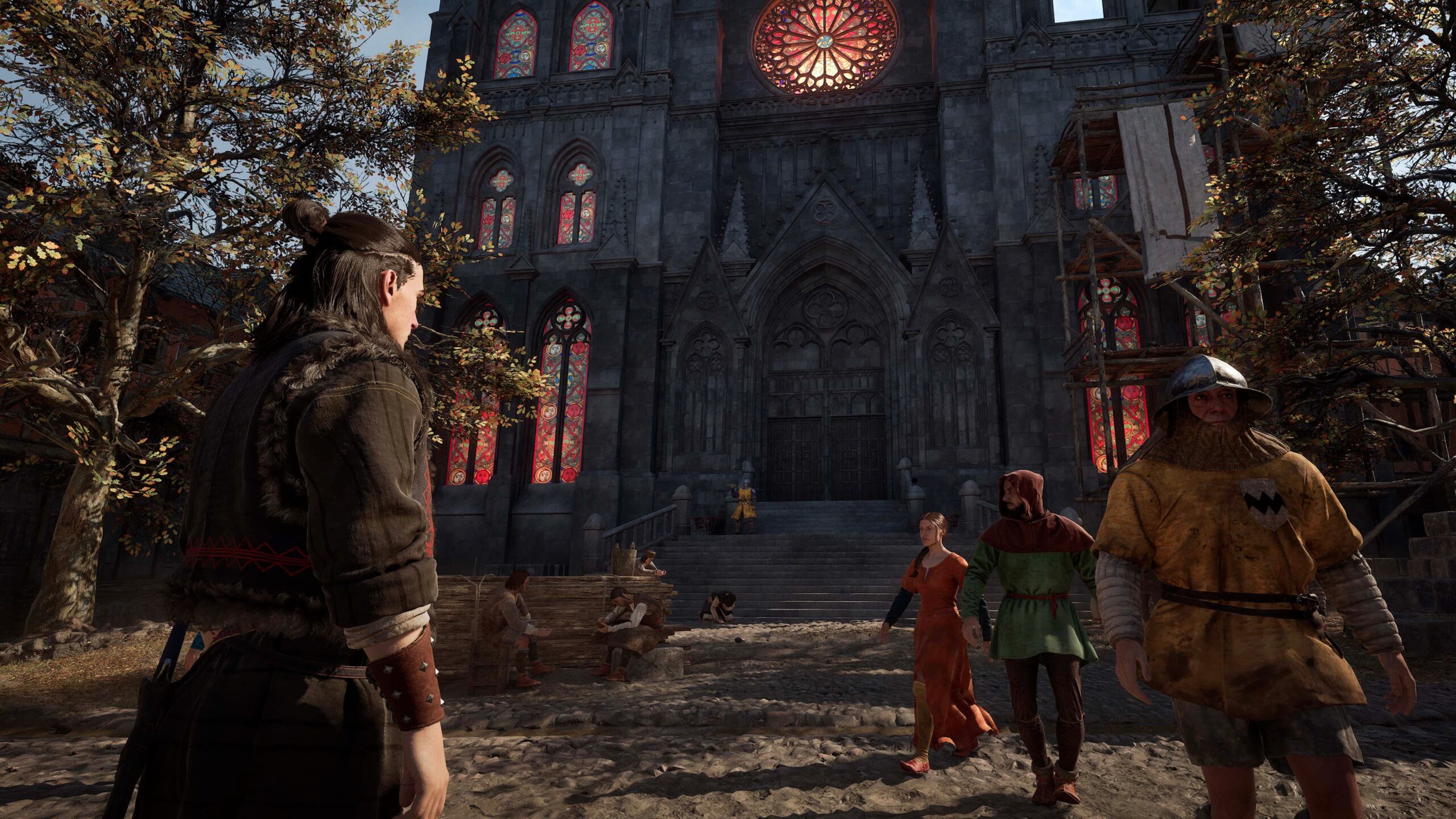The setting couldn’t have been more fitting. Our demo of The Blood of the Dawnwalker took place inside a reconstructed cathedral, with one of the developers at the controls. Gothic arches above us, a crypt waiting in front of us, suddenly the line between presentation and game felt thinner than usual. The objective was simple: get inside that crypt. The path there was anything but. When the dev walked up to a locked door, I expected the usual key hunt. Instead, Coen simply teleported to the roof and slipped in through a hidden entrance. A small moment, but one that instantly showed how vampire powers aren’t just a flashy combat trick, they shape how you could approach the world.
Day and night, two sides of Coen
Vale Sangora feels familiar in its medieval bones, stone villages, candlelit cathedrals, fields and forests, but the vampire twist turns it into something darker, stranger. What impressed me most was how the game plays with time. Every quest can be approached during the day or at night, and it truly changes how things unfold. By day, Coen is a man with spells, tools, and careful tactics. By night, he’s a creature of instinct, with raw power but fewer options for magic. It’s not just an aesthetic swap, it’s a real shift in how you think about missions. Do you storm a lair as a vampire at night, or plan your way through it by day? The game doesn’t decide for you, you do. It’s pretty crazy to think what the impact of all this is on the game. If you’re expecting freedom, you’ll get a lot of that, not only on how you can complete certain quests but also in what part of the day you want to complete it. Do you want to play more as you vampire self or more as your human self? It’s all possible in one game but it makes it feel like this game is actually two entirely different games combined into one; but let’s talk about the combat too.
Combat with bite
Even watching from the sidelines, the combat looked sharp and satisfying. There’s a freedom in how you approach fights: go fast and aggressive like an action RPG, or take a slower, more strategic route. Blocking stood out, play it safe with an omni-block, or take a risk with directional blocking to regain stamina. Add to that a skill tree shaping your playstyle, weapons you can pick back up mid-fight, and encounters that feel as tense as they are dynamic. The demo built up to a boss fight inside the crypt, and that’s where the system really clicked. Quick strikes, dodges, spells, every move looked smooth, dangerous, and exciting.
What stuck with me is how naturally the game’s systems fit together. Exploration, puzzles, combat; all tied to Coen’s dual nature in ways that make sense. That moment of bypassing a locked door with a teleport wasn’t just a neat trick, it was a statement: this world wants you to think differently. Seeing the same area played twice, once in daylight, once in the dark, made that message even clearer. The Blood of the Dawnwalker doesn’t lean on its inspirations, it builds on them, and from what I’ve seen it’s shaping up to be a dark RPG with a strong identity of its own. Watching it unfold inside a cathedral, I couldn’t help but think: this game already knows what it wants to be.


